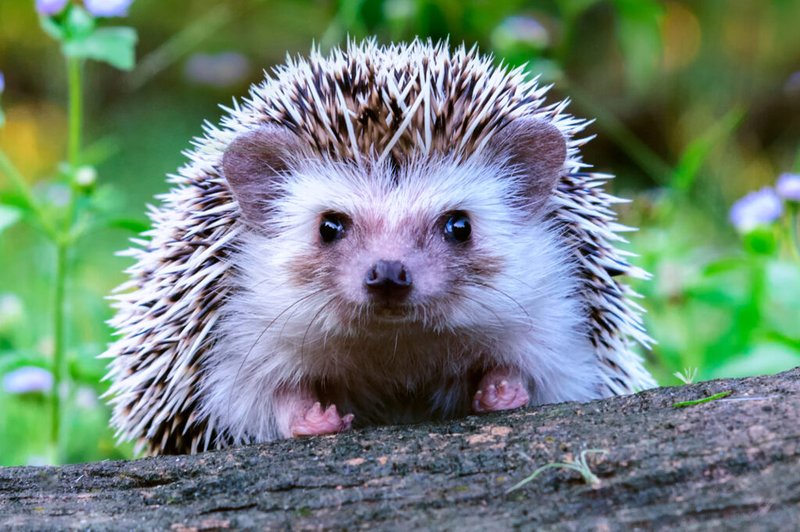
In various parts of the world, hedgehog populations are declining due to habitat loss, climate change, and human activity. Imagine living in an ever-shrinking home, where cars zoom by and gardens are replaced with concrete. It’s a tough life for a critter that’s designed to curl up in a ball at the first sign of danger. So, what’s the true status of hedgehogs around the globe? Buckle up as we dive into the world of hedgehog conservation and what it means for these delightful little creatures.
Understanding Hedgehog Species and Their Habitats
Hedgehogs belong to the family Erinaceidae and are found in various parts of Europe, Asia, and Africa. The most commonly known species is the *European hedgehog,* often seen frolicking in gardens and parks. These creatures thrive in hedgerows, grasslands, and woodlands—essentially anywhere that provides shelter and a food source.
Now, here’s the thing: hedgehogs are not a single species but a range of different ones, each adapted to its environment. For example, the *African pygmy hedgehog* is often kept as a pet due to its small size and friendly demeanor, while the *Long-eared hedgehog* prefers arid desert conditions. Understanding each species and its specific habitat needs is crucial for effective conservation efforts.
Without their natural habitats, hedgehogs struggle to find food and shelter. They rely on insects, worms, and small invertebrates to survive, so a decline in these food sources can spell disaster. Urban development and agricultural practices often disrupt their ecosystems, making it a challenge for hedgehogs to thrive.
Factors Contributing to Hedgehog Decline
Hedgehog populations are experiencing sharp declines, and several factors are to blame. One major issue is habitat loss. As we pave over green spaces for new homes and roads, hedgehogs lose their natural habitats. Gardens, once havens for these spiky creatures, are now often designed with tidy fences and pesticides, making them inhospitable.
Another significant contribution to their decline is road mortality. Hedgehogs are notorious for their slow speed and tendency to wander onto roads. Unfortunately, this curiosity often leads to fatal encounters. In fact, it’s estimated that hundreds of thousands of hedgehogs die on roads every year. It’s a grim reality for these adorable animals, and we can do more to protect them.
Climate change plays a role too. Changes in weather patterns can disrupt hibernation cycles and food availability, making it difficult for hedgehogs to find the sustenance they need to survive. You might wonder how rising temperatures or unexpected snow could affect a small creature, but for hedgehogs, these fluctuations can be life-threatening.
The Role of Conservation Efforts
Conservation efforts for hedgehogs vary from country to country, focusing on restoring habitats and raising awareness about their plight. Organizations worldwide are stepping up to help. For instance, in the UK, the Hedgehog Street campaign encourages gardeners to create hedgehog-friendly spaces by adding small gaps in fences. This simple action can connect gardens, allowing hedgehogs to roam freely and find food.
Additionally, conservationists are working on promoting safe roadways for hedgehogs. They advocate for wildlife crossings and speed limits in areas where hedgehogs are known to be active. Honestly, initiatives like these can make a significant difference, and they often rely on community involvement. Everyone can play a part in hedgehog conservation, whether it’s through speaking up, volunteering, or even just spreading the word.
You might also hear about hedgehog hospitals and rescue centers popping up in various regions. These facilities provide care for injured or sick hedgehogs, rehabilitating them before releasing them back into the wild. It’s heartwarming to see communities come together to care for these animals and ensure their survival.
How to Help Hedgehogs in Your Backyard
If you’re wondering how to make a difference in the life of a hedgehog, starting in your own backyard is a great place to begin. Here are some practical steps you can take:
- Create a Safe Habitat: Leave parts of your garden wild with native plants. This allows hedgehogs to find shelter and food.
- Build Hedgehog Highways: Create small gaps in fences so hedgehogs can roam between gardens. It’s a simple way to help them travel safely!
- Avoid Pesticides: Chemicals can harm hedgehogs and deplete their food sources. Opt for organic gardening practices whenever possible.
- Provide Water: During hot weather, leave shallow bowls of water out. It may seem small, but hedgehogs can struggle to find enough hydration.
Making your garden hedgehog-friendly is not just beneficial for them; it also enhances your natural environment. You might find yourself enjoying the sights and sounds of nature in a new way.
The Importance of Public Awareness
Raising public awareness about the challenges hedgehogs face is crucial for their survival. The more people know about their plight, the more likely they are to take action. Educational campaigns can help dispel myths and provide valuable information about how to coexist with hedgehogs.
Schools, community organizations, and wildlife groups can collaborate to promote hedgehog awareness. They can host workshops, distribute informational pamphlets, or even set up hedgehog-themed events. Imagine a community garden day where families come together to plant native flowers, create habitats, and learn about hedgehogs. Such efforts not only protect these animals but also bring people together.
Social media also plays a vital role in spreading the word. Sharing stories, photos, and facts about hedgehogs can engage others in their conservation. You might be surprised at how many people are passionate about helping these creatures once they understand the challenges they face.
The Future of Hedgehogs: What Lies Ahead?
As we look to the future, the situation for hedgehogs remains uncertain. Conservation efforts are essential, but they require ongoing support and commitment from individuals and governments alike. Policymakers must prioritize wildlife protection and habitat restoration to ensure the survival of hedgehogs.
You might be wondering if these efforts are making a difference. The answer is yes, but it takes time. Success stories from various regions show that with the right approach, hedgehog populations can rebound. Local initiatives, community education, and wildlife-friendly policies all contribute to a brighter future for these little animals.
Ultimately, it’s about all of us coming together to create a world where hedgehogs can thrive. Whether it’s through small changes in our gardens or supporting larger conservation efforts, there’s a role for everyone in helping these delightful creatures.
In conclusion, hedgehogs are facing tough times, and their status as a potential endangered species should not be taken lightly. By understanding their challenges and taking steps to help, we can protect these charming animals. Let’s keep the conversation about hedgehog conservation alive and work toward a future where these little spiky friends can flourish once again.

